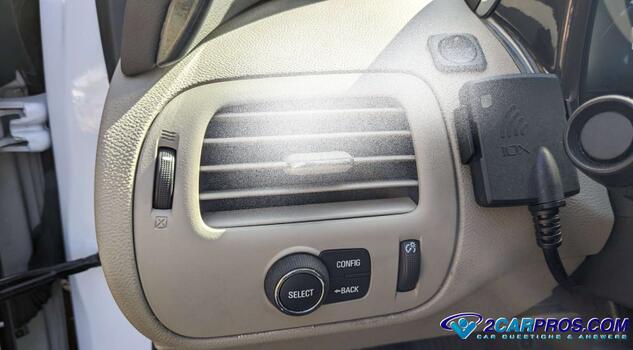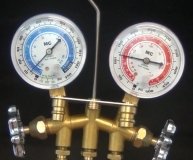Lets say you are driving along and you notice the air flow from the HVAC system vents starts to slow down, you also noticed a light fog with the problem as well. If you let the problem go the air flow stops while the ice/fog increases. This seems like the system would be working too well and you are correct, but this only lasts for a few minutes until the evaporator ices up completely so air can no long be passed through it nor out of the vents. You can shut off the system to allow the evaporator to thaw out which will allow it to start working, but it will soon ice up again. This guide can help us fix the problem which is easy to do in most cases.
Lets Jump In!
The number one reason for the air condition system to ice up is not enough refrigerant, I know what you are thinking, "if there is not enough then why the ice?" yep, it does seem strange that low refrigerant levels can cause this but let me explain why. An automobile air conditioner is designed to generate cold air by allowing the pressure of the refrigerant to drop a particular percentage, from high to low, to generate the cold air. When the system starts to lose its charge the low side pressure drops below the system specification which causes the ice.
How to Fix the Problem
At the auto parts store or Amazon you can purchase a simple AC recharge kit to add a slight amount of refrigerant and follow this simple AC recharge guide. To help find the low side charge port on your car which is where the refrigerant is added use this video to show you how or ask one of our experts. This port is located on the low side or return line from the firewall to the compressor.
Additional Causes of Ice and Fog
Here are additional causes for fog or ice to be expelled from the ventilation system of your car.
- Clogged Cabin Air Filter: Some cars are equipped with a pollen or
air filter to help keep contaminates from the car's passengers compartment.
When this filter needs
to be replaced it can slow the air flow and cause ice on the evaporator.
- Evaporator Temperature Sensor: This sensor gives feedback information
to the HVAC system computer which controls the temperature of the evaporator
and if it malfunctions it can overcool the system. Systems using an expansion
block are designed to have a evaporator temperature sensor. This sensor is made
to shut the compressor off when the temperature becomes to low, this sensor
is located inside the HVAC plenum at the bottom of the evaporator. This can
be checked by using
a CAN scanner which can show you the temperature reading. If the reading
is, lets say 75 degrees F, and the system is blowing ice you know the sensor
is bad.
- Check Low Pressure Sensor Operation: Air conditioner systems are
equipped with a low side pressure sensor which is designed to shut off the compressor
when the pressure becomes to low. This can be monitored by
using an AC gauge set,
if the pressure gets below 20 psi the compressor should shut off, and if not,
replace the sensor which is located in the return line from the evaporator to
the compressor.
- Stuck Compressor Relay: This can cause the compressor to stay on even though the system has signaled for the compressor to shut down. To check for this condition locate the compressor control relay under the hood and swap it out for a new relay, this problem can also drain the battery down overnight as well.
Preventing Future Ice and Fog Issues
Most manufacturers recommend a bi-yearly service of the air conditioner system to help remove internal system moisture which causes rust/corrosion and helps prevent component failures, this service includes a vacuum down and recharge of the system. Also, replacement of the cabin air filter will help you breath fresh air and keep the air flowing through the vents as designed.
Conclusion
Ice or fog forming in your car's air conditioning vents is a sign that something is wrong with the system. By going over this guide you can see how a mechanic would approach this problem, or if you want to do the repair yourself here is what to look for. If you have any reservation about any repair please consult a professional mechanic or ask one of our experts. Safe driving and stay cool!
Watch the Video!
Please watch this video of the job being done to glean additional helpful information.
Credits
Guide knowledge base was created by the 2CarPros Team, overseen by Ken Lavacot: Automobile repair shop owner and certified master automobile technician of over 30 years. If you have question or need help please ask one of our experts we are happy to help. Please visit our 2CarPros YouTube Channel.




